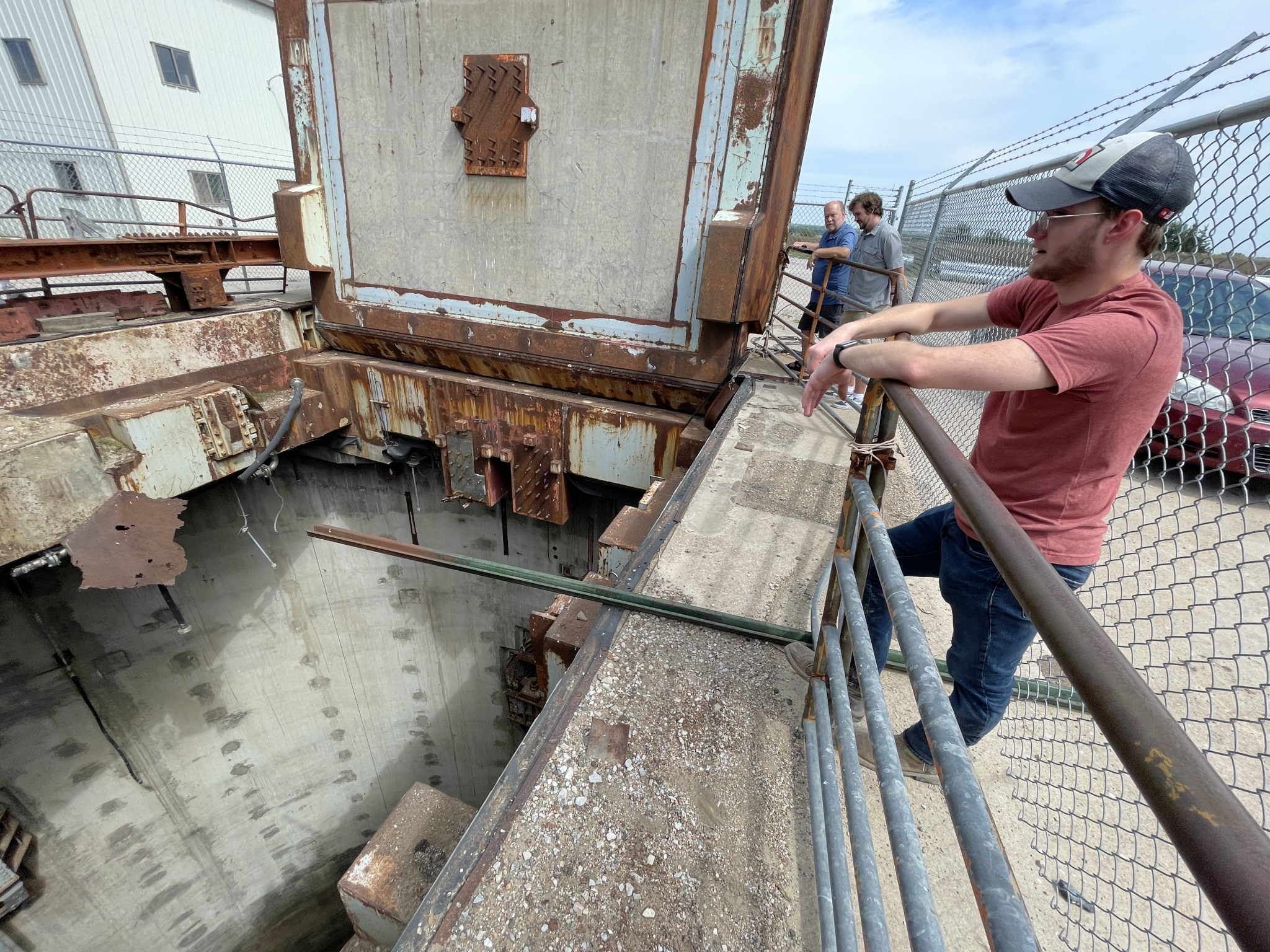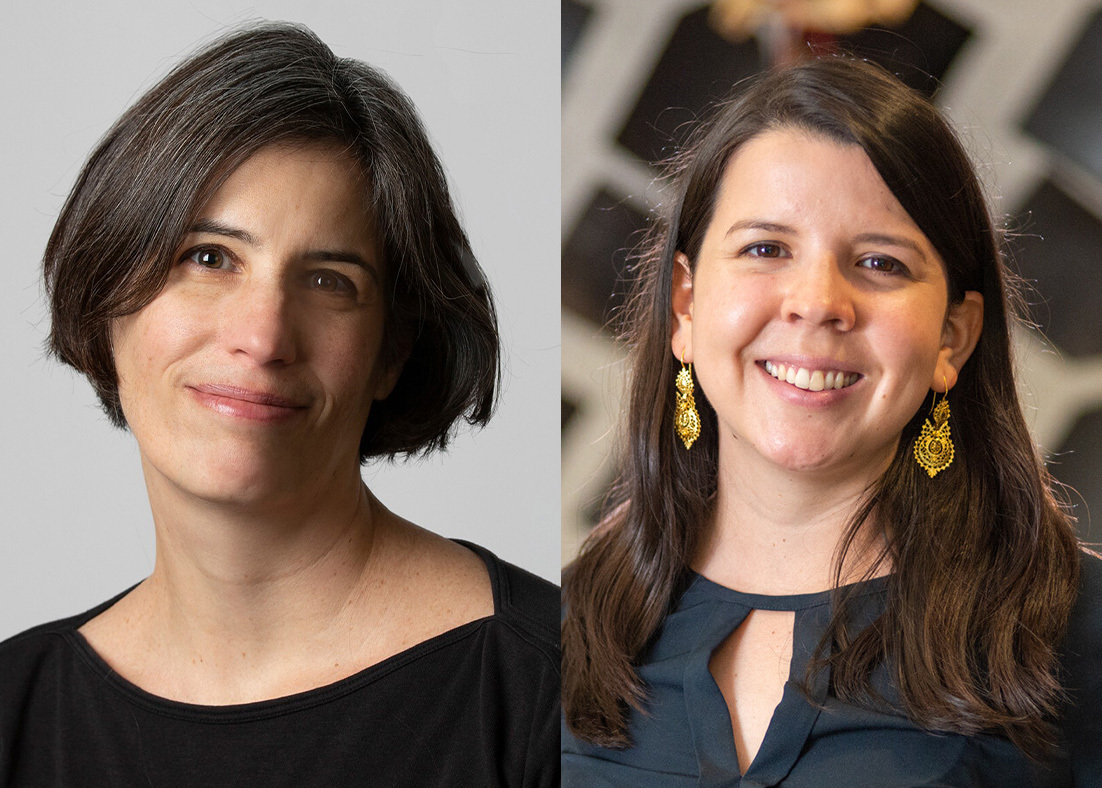University of Tennessee-Knoxville
University of Tennessee-Knoxville News – December 2022
The Chairs for the National Conference on the Beginning Design Student (NCBDS) awarded Associate Professor Jennifer Akerman “Best Paper,” for the association’s meeting, “Metabolic Architecture: Growth and Decay,” hosted by Ball State University, April 1–2, 2022. Akerman’s paper, in part, argues that because architecture changes owing to the effects of material accumulation and decay, architects can engage a prolonged relationship to the buildings they design by more intentionally choreographing, over time, the continual maintenance, repair, and replacement of building components.
Professor Thomas (T.K.) Davis, FAIA, presented two papers in October, 2022: “Learning to See: Norman Daly’s Course ‘Color, Form and Space,” at The Llhuros Symposium, hosted by the UTK School of Art (8 October); and “Nashville’s East Bank Vision: City Building in the 21st Century,” at the Fall, 2022 Meeting of the Tennessee Chapter of the American Planning Association (27 October, Knoxville, TN).
UT Distinguished Professor Marleen K. Davis, DPACSA, FAIA, was elected Vice Chancellor of the ACSA College of Distinguished Professors. Next year she will assume the Chancellorship of the college.
Professor George Dodds, PhD, DPACSA, presented the “Giambattisa Piranesi, Modernity, and the Continuous Avant-Garde,” at a Virtual Roundtable, University of South Carolina, (July, 2021); his “Duvall Decker Architects’ Thompson Center and the Long Arc of Practice,” appeared on the Common\Edge website (November 22, 2021); “Monumental Revival: Architect Guido Pietropoli Resurrects Carlo Scarpa’s Revered Brion Memorial in Italy’s Veneto,” was the cover article of the February, 2022 Architectural Record; in August, 2022, he published, “Design with Nature: Then, Now, and After,” with Christina Geros (The Bartlett), in The Routledge Companion to Ecological Design Thinking (Routledge); in October, 2022, he presented a lecture largely based on the chapter, at the University of Hartford Architecture Program; in September, 2022, he presented “Long and Important Practices Rendered Too Briefly: The Architecture of Alfred and Jane West Clauss,” part of the SAH’s Philadelphia Chapter lecture series “The Elusive Philadelphia School”. Effective December 31, 2022, Dr. Dodds stepped down after 22 years on the faculty of architecture, teaching history/theory and design. He joined the school immediately following the completion of his dissertation at the University of Pennsylvania, Landscape and Garden in the Work of Carlo Scarpa. He was the college’s first James R. Cox Professor (2006-09) and the first Alvin and Sally Beaman Professor (2012-2022). The Executive Editor of the Journal of Architectural Education (2007-11), he has published two books, over 80 scholarly essays, chapters, and works of criticism in professional journals and newspapers.
During his second Fulbright Visiting Professorship at the Crackow University of Technology (Poland), Associate Professor L. David Fox delivered the public lecture, “Drawing to See” (June 2022). His lecture is to be followed by the exhibition of his original paintings/drawings, “David Fox: Drawing to See,” mounted at the gallery of the Stowarzyszenie Architektow Polskich (SARP), January, 2023.
Associate Professor Avigail Sachs’ is publishing, The Garden in the Machine: Planning and Democracy in the Tennessee Valley Authority (UVA Press, March 2023), which examines the social and political ideals of the first 25 years of the TVA, its architects, landscape architects and regional planners – how their ideals filtered through the institution into practice. The book focuses on the tensions between centralized planning and democratic action, including such topics as model towns and their derivatives, visitor facilities, new research on single family homes, and development for leisure and recreation along TVA’s “chain of lakes.”
University of Nebraska-Lincoln
University of Nebraska students working to bring new life to Cold War silo relic
College of Architecture students and University of Nebraska-Lincoln (UNL) researchers are working to bring new life to a Cold War relic here in Nebraska. A brainchild born from the UNL Grand Challenges research, collaboration initiative, the team endeavors to create a testing facility for ice core drilling equipment with educational outreach and exhibition space using an abandoned Atlas-F missile silo near Seward, Nebraska. Upon completion, the ICE (Ice Coring & Education) Silo Center will be the first facility of its kind in the world. College of Architecture Collaborate studio students explored concepts for the center as part of their fall semester project. These concepts will be used in future project development, planning and grant application efforts.
The genesis of this project began when several UNL researchers were discussing the need to fully test the ice core drilling equipment before being shipped to remote field stations in Greenland and Antarctica. Earth and Atmospheric Sciences Professor David Harwood, UNL Lead Driller Dennis Duling and ICE Silo Project Chief Engineer Jim McManis were exploring options for testing the equipment prior to travel since transporting costs about half a million dollars every time they make the trip, and equipment failure in the field has significant impacts on science outcomes. If they could test the equipment locally in Nebraska, potential risks could be significantly decreased.
Duling said to Harwood, “You know, there’s a big hole in the ground we could use near Seward,” and proposed the Cold War silos to Harwood as a potential site for development. Through Grand Challenges meet and greets, Harwood and his colleague Mindi Searls, a Research Assistant Professor in the Department of Earth and Atmospheric Sciences, who are coordinating this project were introduced to Associate Professor of Architecture Brian Kelly. Kelly has been researching the silos for the past four years and taught several studios centered around repurposing the abandoned silos.
“It was serendipitous that our areas of research overlapped,” said Kelly. “I was excited to help explore the possibilities of how they could repurpose the silo for testing, and what better learning opportunity for my students than to bring them into a collaborative, interdisciplinary design project with faculty from across the campus.”
So far, the collaborative team and the students have identified three focus areas for the spaces in the proposed 70,000 sq. ft. facility: ice drilling equipment fabrication and testing, exhibition and educational outreach.
Ice Core Drilling Focus
The ice core drilling equipment testing center with an adjacent workshop has the potential to save the university time and money by trouble shooting the equipment before the drilling team travels to remote locations.
“We don’t usually have an opportunity to test the equipment before shipping new tools into the field,” said Harwood. “There is so much effort in setting up remote field camps on top of ice sheets, often they are three years in development, traversing and shipping, so it is critically important that the tools doing the science are the best they can be, and that they work as needed to do the science.”
By having a local testing center and workshop Harwood explains, it would also increase their onsite efficiencies and drilling approaches.
“The onsite workshop would allow engineers and drillers to make adjustments and modifications to their drills and instruments after testing,” Harwood said. “It would enhance UNL’s ability to design, develop and test its own drills and instruments, building upon our past success in this field.”
Although the abandoned silo site is much shorter than the drilling depth used by scientists and researchers in the Antarctic and Greenland, the proposed 150 feet deep, by ten feet diameter ice column is all they need for testing, simulation and calibration.
“The entry into the ice and the point where they break through into the subglacial lake are the points that are crucial for the drill team to understand how the equipment will perform, and our proposed testing site will simulate those situations for them,” said Kelly.
Ideally, the testing center will also be a research destination for other universities who also need to test their drilling systems and run their drills. There are numerous national and international polar scientists and engineers from ice-drilling research institutions who are potential users for this center.
“I can see this facility filling an international research niche,” said Harwood. “There are always challenges working in remote polar regions, far from logistical support centers and resupply shops, but this new facility would help reduce those risks and ensure that ice drilling systems from UNL, or other national and international research centers, would be mission ready. This facility would be able to ‘custom-build’ columns of ice specific to what each project would expect in the field.”
Exhibition and Outreach Focus
Another focus of the center will be an exhibition area to showcase local history, the science of ice core drilling, issues around climate change, earth and atmospheric sciences etc.
A prime exhibition example would be the history of area missile silos. Although brief, a story unknown to many, the Lincoln Air Force Base played a significant role in our nation’s Cold War history controlling the launch sites for 12 missile silos near Eagle, Elmwood, Avoca, Nebraska City, Palmyra, Tecumseh, Beatrice, Cortland, Wilber, Seward, York and Brainard, Nebraska. Construction for these silos started in 1959, was completed in about one year, and by 1965 all silo sites had been decommissioned.
Bringing elementary and high school teachers and students to facilities like this to learn about the silo’s Cold War history, the science of ice-core drilling, or the engineering challenges it took to build the silos and to repurpose them, would be a significant resource for Nebraska educators.
“The educational possibilities here are really endless,” said Kelly. “This project has amazing potential for adjacent communities.”
Project Timeline
Although many design projects for College of Architecture students are hypothetical, Kelly says the ICE Silo is a facility they hope to build with various partners.
“We currently have a planning grant through UNL’s Grand Challenges program, and at the beginning of next year, Harwood, Searls and Kelly will be submitting a mid-scale infrastructure grant to the National Science Foundation (NSF) to further advance the design phase of this project.”
This is a multi-phased, multi-year project at UNL, which Kelly said he can see the baton being passed to future studios for additional development with the UNL researchers.
Student Experience
“This is an exciting opportunity for my students because they are exposed to research and development for a project type that doesn’t currently exist,” said Kelly. “There are no other facilities like this in the world, so this is energizing for us to be on the ground floor of a project like this.”
Harwood, McManis and Searls served as consultants for the students as they created and developed their concepts offering advice and guidance during meetings and project critiques.
“It was great to see the projects develop, and we were very impressed with the creativity and dedicated effort of the students in Brian Kelly’s Design Studio,” said Harwood. “They rose to and met the challenges presented to them. It is clear that they had fun, and the quality of the four treatments indicated they learned a lot!”
Kelly’s fourth-year, Collaborate studio, is structured to be interdisciplinary with interior design, landscape architecture and architecture students giving them a cross-disciplinary experience similar to that of a design firm. The ICE Silo fits the studio’s learning outcomes well, offering students exposure to multiple design aspects of the built environment.
“It’s great working in the collaborative environment of our studio,” said architecture student Daniel Pinto. “We have students from various college disciplines, and it is exciting because I get to hear from different perspectives. This project is probably the most fleshed out project I’ve worked on so far, and I think that speaks to all the disciplines working together.”
Kelly said he feels this project is an odd twist of fate if you look at it historically.
“If you think about where this facility will be located, it will be situated in a missile silo,” said Kelly. “I think there’s some real poetry in modifying a facility whose purpose was once meant for mass destruction and replacing it with a research center which will help us better understand environmental issues and climate change, therefore helping to save our planet and our future, rather than destroying it.”
Studio Student Collaborators:
Jace Armstrong
Kate Brashear
Paulina Garcia
Jampé Gergen
Anna Heilhecker
Luryn Hendrickson
Haley Herman
Nikita Mansinghani
Caleb Mohnike
Paul Mullins
Daniel Pinto
William Roarty
Xanthe Steffen
Eliot Stoner
Trent Weatherwax
Renee Zandt
Penn State
Architecture professor and recent alum earn international honors for research
UNIVERSITY PARK, Pa. — An architecture faculty member in the Penn State College of Arts and Architecture’s Stuckeman School and a recent architecture alumna of the school have been recognized for their research by the Architectural Research Centers Consortium (ARCC), an international association of architectural research centers, academies and organizations committed to the research culture and supporting infrastructure of architecture and related design disciplines.
Lisa Iulo, associate professor of architecture and director of the Hamer Center for Community Design, was named recipient of the 2023 ARCC Mid-Career Research Impact Award. The award acknowledges faculty in architectural research that demonstrates substantive evidence and impact through original contributions, rigorous methods, innovative outcomes, successful dissemination, significance and distinction.
According to the award letter from Adil Sharag-Eldin, ARCC president, Iulo was selected for the honor based on the quality of her research, evidence of an extensive body of inquiry and the impact of her work in the field of architecture.
As director of the Hamer Center for Community Design, Iulo leads a team of researchers in creating community partnerships that integrate socio-economic and environmentally conscious resolution to design and planning problems. The center has partnered with several communities in Pennsylvania and beyond since 1996 to offer design solutions through a community-based approach.
Iulo has become a champion of energy-efficient affordable housing, having many published articles and speaking on the topic at numerous events and peer-reviewed conferences both nationally and internationally.
In 2012, she founded the Energy Efficient Housing Research Group (EEHR) to investigate “responsible housing” in order to inform better housing and more resource-conscious living. In 2014, EEHR partnered with the State College Community Land Trust to research, design and document the GreenBuild Duplex, located at 1394 University Drive in State College, Pennsylvania. The GreenBuild homes are designed to be net-zero energy, meaning they produce as much energy as they use, while remaining affordable to median-income homebuyers in the area.
She also leads the Penn State Initiative for Resilient Communities (PSIRC), which formed in 2019 with support from Phase 3 of the Penn State Strategic Plan seed grant program, to provide an environment of shared discovery in which people can come together to address local resilience challenges of small, riverine communities vulnerable to flood risk.
In collaboration with colleagues from across the University, Iulo has received research funding from the U.S. Department of Energy and the National Science Foundation, as well as the Penn State Institutes of Energy and the Environment (IEE) and other University entities.
In addition to her extensive work with the Hamer Center for Community Design, Iulo is an associate director of the Center for Climate Risk Management at Penn State.
Elena Vazquez, who graduated with her doctorate in architecture from Penn State in August 2022, was named the 2023 recipient of the ARCC Dissertation Award. The award is intended to honor significant new research in architecture and environmental design and to recognize the achievement of an emerging scholar.
In her doctoral studies as a researcher in the Stuckeman Center for Design Computing (SCDC), Vazquez helped develop a window screen system for buildings that automatically changes its shape based on indoor and outdoor environmental conditions.
Titled “Kinetic Architecture: A performance-based approach for developing a shape-changing skin using bistable and smart materials,” Vazquez developed the responsive building façade system that features screens made of smart and bistable materials on the inside a building’s windows, which open and close based on the weather conditions and lighting outside, as well as the indoor lighting and climate requirements.
“Novel smart materials present exciting new opportunities to rethink our buildings to become attuned and react to outdoor conditions. This study helps advance our understanding of bistability for architectural design, bringing forth a new generation of energy-efficient actuators that help design for a changing climate,” she said.
Vazquez is now a technology and design research fellow at the University of North Carolina at Charlotte. She earned a graduate certificate in additive manufacturing in 2020 and her master of science in architecture in 2018, both at Penn State.

 Study Architecture
Study Architecture  ProPEL
ProPEL 


